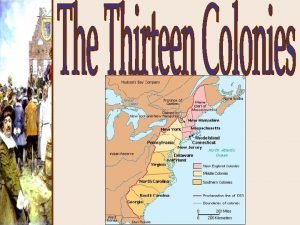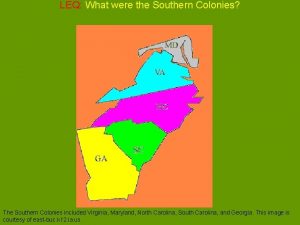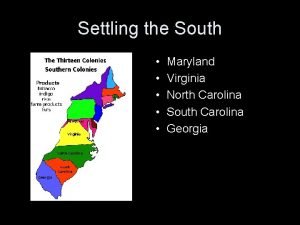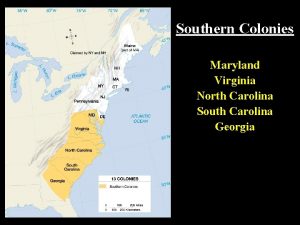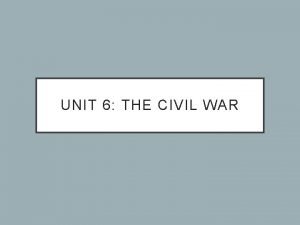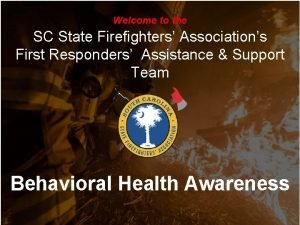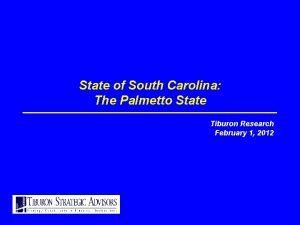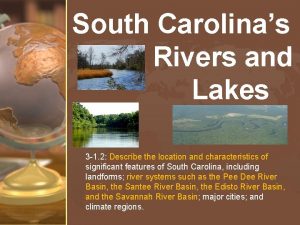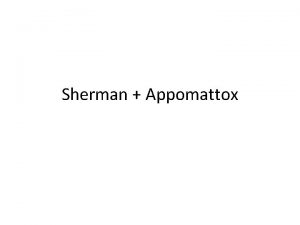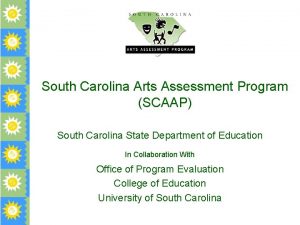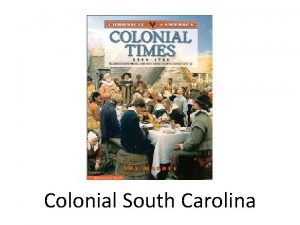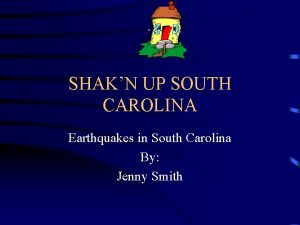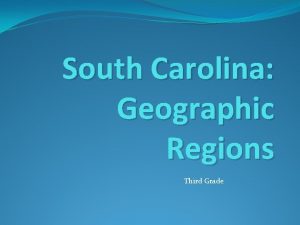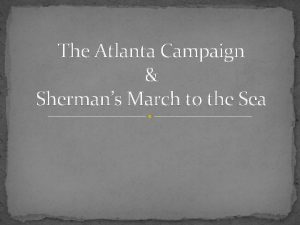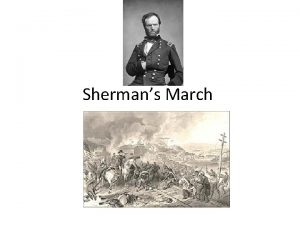Shermans March Through South Carolina Third Grade Social












- Slides: 12

Sherman’s March Through South Carolina Third Grade Social Studies 2/27/09

Let’s Review! n n n South Carolina seceded from the Union in 1860, and formed a new country called the Confederate States of America with other southern states. On April 12, 1861, the Confederacy demanded that Union troops leave Fort Sumter. The Union troops refused, so General Beauregard of the Confederate army began firing on Fort Sumter. This bombardment continued until the Union troops surrendered. The Federal troops were allowed to leave peacefully, but the Civil War had begun.

Let’s Review! n n President Lincoln and the Union army prepared for war, and so did the Confederacy. South Carolina depended on the export of cotton in exchange for imports of much needed war supplies from Europe. The Union Navy blockaded the Charleston Harbor to keep the Confederacy from getting these supplies. This brought great hardship on the people of South Carolina because they could not get the things they needed.

Let’s Review! n Determined to break the blockade, the Confederacy developed the first submarines near the end of the war. n The H. L. Hunley was the first submarine to sink an enemy ship in battle. n However, the Hunley sank after attacking the USS Housatonic, and was not effective in breaking the Union blockade of Charleston.

The Civil War Comes to South Carolina n After Fort Sumter, most of the Civil War battles took place outside South Carolina. n However, the war came to our state when the Union forces took over Port Royal (near Hilton Head) and tried to take over Charleston for over a year.

General Sherman Near the end of the war, General William Tecumseh Sherman led his troops across Georgia and South Carolina in an effort to split the Confederacy and finally bring an end to the war. n He used a tactic called “total war. ” n

The March to the Sea Sherman’s troops marched from Atlanta to Savannah, Georgia. n They left behind a “trail of destruction. ” n As they marched, they burned and looted farms and plantations. n

Sherman’s march through South Carolina Sherman’s march continued through South Carolina from Savannah to Columbia. n The city of Columbia burned, and Sherman’s men headed toward the North Carolina border. n

STOP! n Find page 22 of your South Carolina atlas and trace Sherman’s March through our state.

Why? n The purpose of Sherman’s march was to destroy the Confederacy’s supplies and anything that was important to the economy of the south. n This was all in an effort to end the war, and convince the civilian population to end the war.

What it might have been like…

What have you learned? n What major South Carolina city was burned during Sherman’s march? n What was the purpose of Sherman’s march? n What effect did Sherman’s march have on the Confederacy?
 North carolina marschland
North carolina marschland Map of north carolina and south carolina
Map of north carolina and south carolina Virginia, maryland, north carolina, south carolina, georgia
Virginia, maryland, north carolina, south carolina, georgia Virginia, maryland, north carolina, south carolina, georgia
Virginia, maryland, north carolina, south carolina, georgia Causes of civil war
Causes of civil war Shermans logistics
Shermans logistics March march dabrowski
March march dabrowski South carolina state firefighters association
South carolina state firefighters association Iaai palmetto
Iaai palmetto South carolina major rivers
South carolina major rivers South carolina employee withholding tax form
South carolina employee withholding tax form Types of turtles in south carolina
Types of turtles in south carolina South carolina the beautiful palmetto state
South carolina the beautiful palmetto state
